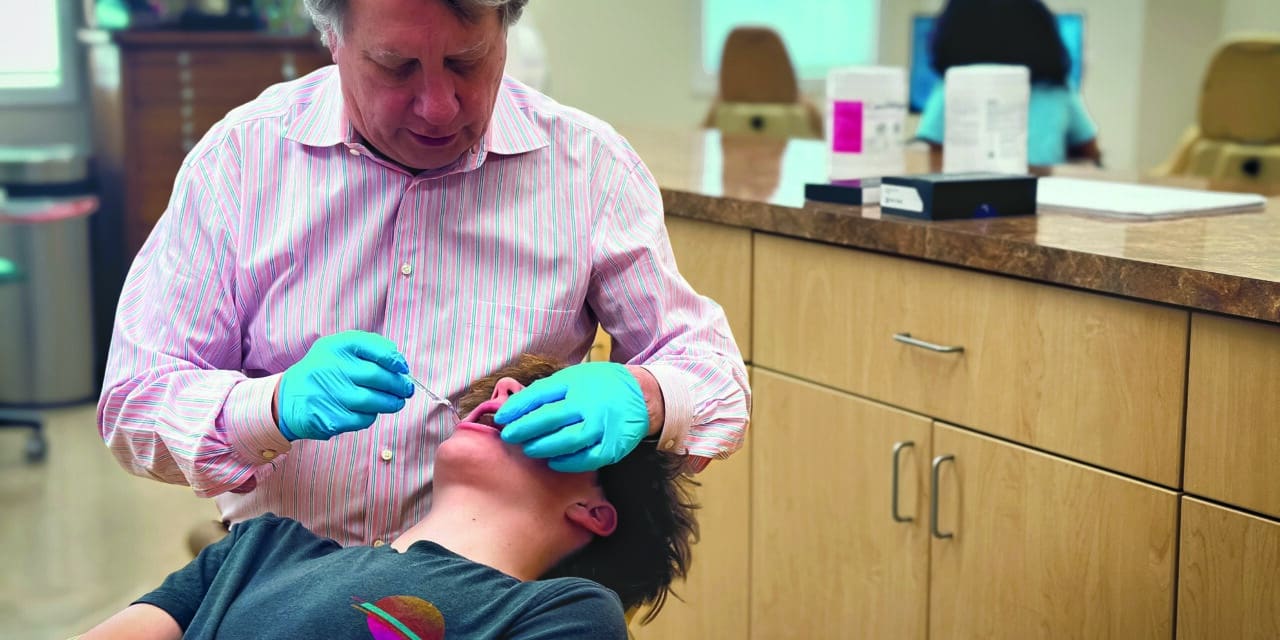Dr C. William Dabney on how he is using remote monitoring, AI-driven Smart STL files, and in-office 3D printing to streamline aligner refinements and reduce wait times in his practice.
By Alison Werner
Refinements in clear aligner treatment are common. Cases don’t always progress exactly as planned, requiring adjustments along the way. However, these refinements come with challenges: added patient visits, delays in treatment timelines, and increased costs for the practice. For C. William Dabney, DDS, an orthodontist in private practice in Midlothian, Va, finding ways to make this process more efficient has been a priority.
Through the adoption of remote monitoring, digital scanning advancements, and in-office production technologies, he has been working to streamline refinements in his practice. And as direct 3D printing of aligners becomes a reality, he sees even greater opportunities to improve efficiency in the near future.
The Traditional Refinement Process and Its Challenges
More often than not, the orthodontist doesn’t know the patient is off track until they sit down in the chair for a scheduled appointment. From there it’s staff time spent on an unplanned scan that then has to be sent off to the lab to manufacture the additional aligner trays. The waiting period for new trays can range from 3 to 5 weeks, during which the patient’s treatment is essentially on hold.
Dabney has seen this process unfold countless times.
“The trays never work the way they should 100% of the time,” he explains. “Previously, we’d have [the] patient come in at the end of 12 or 20 weeks, whenever the trays were out. We’d do the scan, send [it] off, and wait 4 to 5 weeks for the new trays. Patients, especially adults, found the waiting frustrating, and it added unnecessary inefficiencies to treatment.”
Additionally, refinements increase the number of office visits a patient must make. For orthodontists, this means more chair time per case, potentially extending treatment beyond what was originally planned and reducing revenue per visit.
Leveraging Remote Monitoring to Reduce Delays
One of the biggest inefficiencies in the traditional refinement process is the delay in recognizing when an issue arises. If an orthodontist only reviews a patient’s progress every 6 to 8 weeks, problems may not be noticed until significant time has passed. By then, multiple teeth may be off track, requiring a larger correction.
To address this, Dabney has incorporated DentalMonitoring, a remote tracking system that allows patients to submit scans of their teeth weekly using their smartphones. This allows him to monitor progress more frequently and intervene sooner when needed.
“We monitor patients every week virtually,” Dabney says. “If someone is falling behind, we can encourage them to improve their aligner wear before it results in a significant setback.”
This approach helps to identify issues before they compound, potentially reducing the severity of refinements needed. In addition, it allows his team to provide real-time guidance, such as adjusting aligner wear schedules or ensuring proper compliance, which can prevent refinements altogether.
READ MORE: Dr Glaser’s Top 10 Reasons to Use Virtual Treatment Monitoring
The Role of Smart STL Files in Speeding Up Refinements
A major bottleneck in refinements has traditionally been the need for an in-office scan to create new aligners. Before new technological advancements, if a patient needed refinements, they had to visit the office for a new intraoral scan, which was then processed and sent to the manufacturer. This could take days to complete, and if there were any errors in the scan, the process would have to be repeated, adding further delays.
The introduction of Smart STL by DentalMonitoring has helped to address this issue. The AI-driven Smart STL allows orthodontists to generate an STL file—the digital file used to create aligners—directly from a patient’s remote scan without requiring an in-office visit.
“Now, instead of making them come in, I have the scan handy and can send it directly to the manufacturer,” Dabney says. “This skips a step entirely, getting us more efficient.”
By eliminating the need for an additional in-office visit to capture a new scan, this tool has further streamlined the refinement process, making it easier to keep patients on track without unnecessary delays.
The Persistent Challenge of Aligner Production Timelines
Even with advancements in remote monitoring and Smart STL, one major limitation remains: the time it takes to receive new aligners from the manufacturer. While submitting a scan is now more efficient, manufacturers still require 3 to 5 weeks to produce and ship new trays.
“You either need a really compliant manufacturer that can speed up your process, or you need to consider in-house aligners,” Dabney says.
For some orthodontists, this delay is simply an unavoidable part of the process. However, others—like Dabney—are looking toward solutions that can remove this step altogether.
In-Office 3D Printing: The Next Step in Aligner Refinement Efficiency
One potential solution to the issue of manufacturing delays is in-office 3D printing. Instead of waiting weeks for aligners to be shipped, orthodontists with the right technology can print aligners in-office, cutting turnaround time down to days.
“If you print in-house, the turnaround can be as fast as your lab can produce,” Dabney says. “Instead of waiting 4 weeks, you might get it out in a week or two, reducing time in the office and extra appointments.”
The Future of Direct 3D-Printed Aligners
Beyond traditional 3D printing, direct printing of aligners is emerging as an even more advanced option. Direct-print aligners eliminate the need for thermoforming—a process currently used to shape aligners around a printed model—allowing for faster, more precise production.
Dabney sees this as the logical next step in the refinement process for his practice.
“I’m looking at doing more in-house printers and exploring direct print of aligners. Instead of manufacturing 40 trays upfront, we could batch print the first 10, evaluate progress, and adjust the plan before committing to the entire series.”
This approach has the added benefit of reducing plastic waste, while making it possible to customize refinements more dynamically. By batch printing aligners in smaller increments, orthodontists can reduce unnecessary refinements and monitor progress and adjust as needed.
A More Efficient Refinement Process—Now and in the Future
Through remote monitoring, Smart STL, and in-office production technologies, Dabney is actively working to make the refinement process more efficient for both his practice and his patients.
By integrating AI-driven remote monitoring and digital scanning advancements, he has already cut down on unnecessary patient visits and reduced the likelihood of severe refinements. Looking ahead, in-office 3D printing and direct-print aligners could further eliminate inefficiencies and give orthodontists greater control over their treatment plans.
“There are still inefficiencies, but technology is helping us cut down on wasted time,” Dabney says. “By integrating AI, batch printing, and in-house production, we can cut two to three months off treatment time.”
As the orthodontic industry continues to evolve, the ability to streamline refinements through technology will be key to reducing treatment timelines and improving patient satisfaction. Dabney’s approach provides a glimpse into the future—one where refinements are faster, aligners are produced on-demand, and patients spend less time waiting in the chair for their perfect smile. OP
Photo courtesy of C. William Dabney, DDS.
Alison Werner is chief editor of Orthodontic Products.










